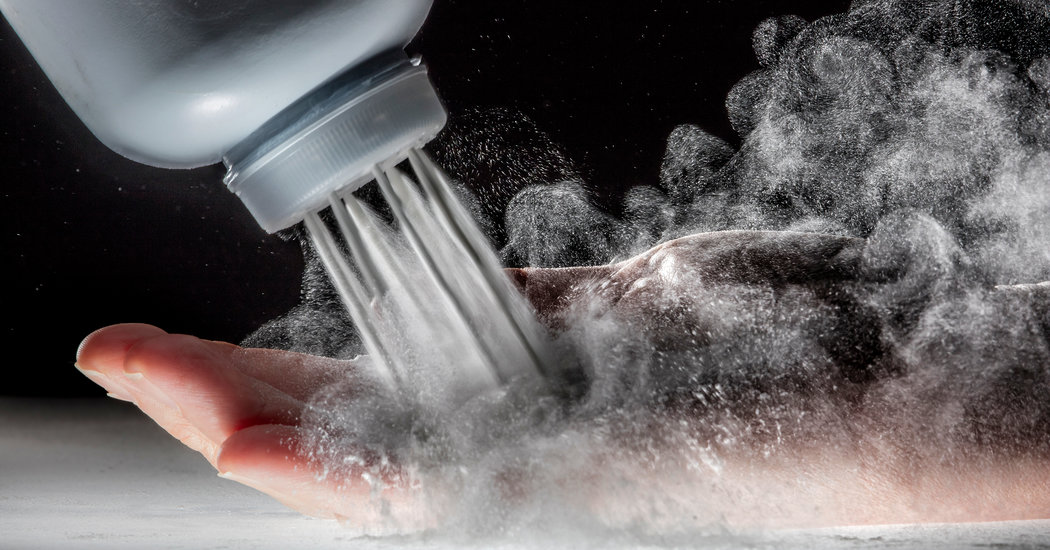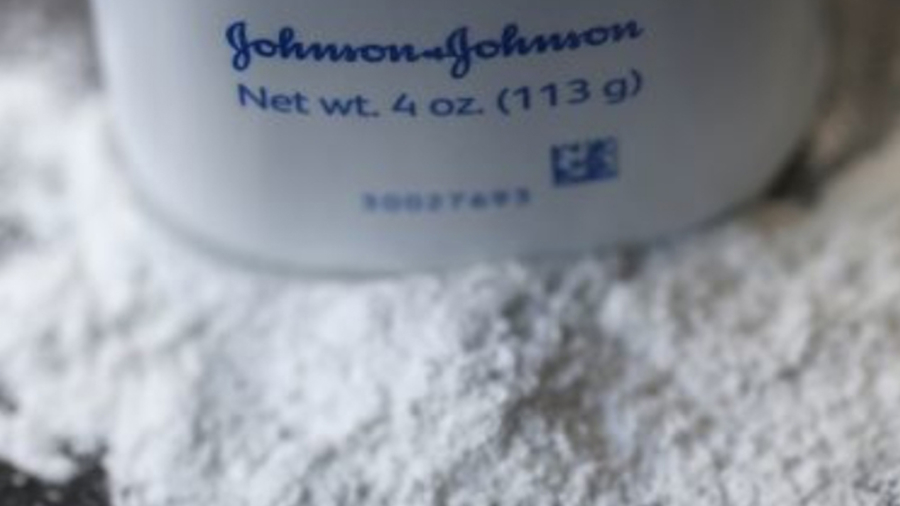What you need to know if you or a loved one used this product.
Written by Tracy R Everhart, MSN, MS CAM
What is talcum powder?
You will hear this product referred to as talcum powder, talcum or just talc. Talcum powder is made from a mineral called talc. It has been included in many different products and was initially marketed in the 1800s along with other feminine hygiene products. This mineral has historically been added to baby products and cosmetics because of its ability to absorb moisture and reduce friction. Because of this property, talc prevents rashes from moisture and allows cosmetics to be applied smoothly.
Talc is the softest known mineral and because of its properties, it is used for many other purposes. In 2011, about 26% of the talc consumed in the United States was used in the manufacturing of plastics because of its heat resistance and its ability to stiffen and prevent shrinkage of products such as polypropylene, vinyl, polyethylene, nylon, and polyester.
Unfortunately, talc and asbestos may occur naturally in close proximity to each other in some metamorphic rocks. Studies published as early as the 1960s and 1970s identified health concerns about the use of talc that contains asbestos in some cosmetic products. According to the FDA, those studies did not conclusively demonstrate such a link, or if such a link existed, what risk factors might be involved.
Health Risks of Using Talcum Powder
The Cosmetic, Toiletry, and Fragrances Association (CTFA) is the agency that regulates the cosmetics and personal products industries and in 1976 they issued voluntary guidelines for the use of talc. These guidelines stated that it should be standard that all cosmetics produced with talc should be free of any detectable amount of asbestos.
Talcum Powder and Ovarian Cancer
In 1982, a case-control study of ovarian cancer that collected information on talc use reported an increased risk with perineal dusting. Subsequently, cosmetic grade talc was nominated to the National Toxicology Program’s (NTP) 10th Report on Carcinogens, but the decision was deferred. By 2006, the International Agency for Research on Cancer listed cosmetic (perineal) talc application as possibly carcinogenic to humans.
In the above case study, Dr. Cramer from Harvard University hypothesized that there was an association between talc and ovarian cancer. This was because of the similarity of ovarian cancer to mesotheliomas and the chemical relationship of talc to asbestos, a known cause of mesotheliomas. His research concluded that there was an association between talc and ovarian cancer. Despite these findings, manufacturers like Johnson & Johnson continued (and do to this day) to market and sell products that contain talc.
Exposure to Asbestos
Of all of the studies conducted over the years, the issue has been whether or not the talcum powder that was used for nearly a century, contained detectable amounts of asbestos. According to the National Cancer Institute, asbestos has been classified as a known human carcinogen by the U.S. Department of Health and Human Services (HHS) and the U.S. Environmental Protection Agency (EPA). Exposure to asbestos has been shown through significant research to be the primary cause of mesothelioma and that there is sufficient evidence that it also causes cancer of the lung, larynx, and ovaries (International Agency for Research on Cancer).
What are the experts saying?
- The International Agency for Research on Cancer (IARC) classifies talc that contains asbestos as “carcinogenic to humans.” The also found, based on limited human study evidence, that the perineal (genital) use of talc-based body powder as “possibly carcinogenic to humans.”
- The US National Toxicology Program (NTP) has not thoroughly evaluated talc (with or without asbestos) as a possible carcinogen.
- The Centers for Disease Control and Prevention (CDC) released the results of a study that was conducted in 1972. “Fiber exposure during use of baby powders, report No. IWS-36-6” has stated that during the testing of nine commercial baby powers, seven were found to contain asbestos fibers (known to be carcinogenic) that could be inhaled on a regular basis, several times each day with each diaper changes and over time it could amount to a significant number of exposures. From this information, they determined that baby powder (talcum powder) that contains asbestos could be potentially harmful if inhaled.
- The US Food and Drug Administration (FDA) conducted a survey in 2009-2010. They identified 9 manufactures to explore and asked for their participation in the study, Only four of those manufactures agreed. The FDA does not have the equipment necessary to conduct the research that they wanted to do, so they contracted with an outside testing laboratory to complete these studies. They collected 24 talc-containing cosmetic products (including baby powder) from retailers in the Washington, D.C. metropolitan area and found that none of them contained asbestos. They admitted that while the information gathered was informative, it was also limited. They will continue to monitor as new information is reported.
Lawsuits related to talcum powder and ovarian cancer
- 11/22/13 Deane Berg
This was the first lawsuit brought against Johnson & Johnson. Deane filed her lawsuit after being diagnosed with ovarian cancer. A federal jury sided with Berg but determined that no damages were to be awarded. They believed that there wasn’t enough evidence connecting her diagnosis to the use of talcum powder. The jury did state that they felt that Johnson & Johnson was negligent, and women should have been warned about the potential risks associated with the use of talcum powder.
- 2/22/16 Jackie Fox
Ms. Fox was diagnosed with terminal cancer and passed away in 2015 before a determination could be made. Her case stated that she was diagnosed with ovarian cancer after using Johnson & Johnson baby powder for years. Her family was awarded $72 million dollars. The courts determined that her attorneys had proven that Johnson & Johnson knew about studies linking its products to ovarian cancer. Furthermore, they failed to warn customers about the possible dangers associated with its use.
- 5/2/16 Gloria Ristesund
This case presented the fact that Gloria used Johnson & Johnson powders that contained talc for decades before she was diagnosed with ovarian cancer. A jury in the Missouri state court found Johnson & Johnson liable for failing to warn consumers about the risk of ovarian cancer when exposed to talc-containing powders.
- 10/27/16 Deborah Giannecchini
Deborah used Johnson & Johnson’s baby powder as part of her feminine hygiene routine for over forty years. She filed a lawsuit against Johnson & Johnson in the state court in St. Louis, Missouri after she was diagnosed with ovarian cancer. The jury in her case found that Johnson & Johnson was negligent for failing to warn women about the risk of ovarian cancer related to talcum powder. The court awarded Deborah a $70 million settlement.
- 5/4/17 Lois Slemp
A state court jury also in St. Louis, Missouri awarded Ms. Slemp $110 million. This was the result of Johnson & Johnson failing to warn her about the risk of ovarian cancer caused by talcum powder.
- 8/21/17 Eva Echeverria
A state court jury in Los Angeles, California granted an award to Eva in the amount of $417 million. The jury felt that Johnson & Johnson failing to provide a warning to her about the risk of ovarian cancer with the use of talcum powder. The verdict included $347 million in punitive damages. This large award was designed to send a loud and clear message to this manufacturer.
- 7/12/18 22 Female Plaintiffs
This case was also filed in the state court of St Louis, Missouri. The case involved 22 women that proceeded as a joint Plaintiff against Johnson & Johnson. The jury reached a unanimous verdict in a products liability case with a verdict that is one of the largest products liability cases in the U.S. The members of the jury agreed on an award of $25 million for each of the 22 women for compensatory damages and, in addition, they awarded an additional $4.14 billion in punitive damages. This award totaled $4.69 billion.
This lawsuit included women from across the US. They were varying ages and races, but all were former users of Johnson & Johnson talcum powder that developed ovarian cancer. Since that case was settled, six of these plaintiffs have died. It is estimated that more than 9000 former talcum powder customers have filed lawsuits against Johnson & Johnson. Most of these claims have been filed for damages for ovarian cancer, but some allege that using this talcum powder led to the development of mesothelioma.
References:
https://geology.com/minerals/talc.shtml
https://www.sciencedirect.com/science/article/pii/0013935167900084
https://obgyn.onlinelibrary.wiley.com/doi/abs/10.1111/j.1471-0528.1971.tb00267.x
https://www.cdc.gov/niosh/nioshtic-2/00106056.html
https://www.fda.gov/cosmetics/productsingredients/ingredients/ucm293184.htm
https://monographs.iarc.fr/wp-content/uploads/2018/06/mono100C.pdf
https://cvn.com/proceedings/gloria-ristesund-v-johnson-johnson-trial-2016-04-11
https://www.cnn.com/2018/04/11/health/talc-ovarian-cancer-cases/index.html
https://www.cnn.com/2018/04/11/health/talc-ovarian-cancer-cases/index.html
https://www.bna.com/jj-face-nonmissouri-n73014472672/
https://images.law.com/contrib/content/uploads/documents/403/18584/Talc-appeal-7-18.pdf

Tracy R Everhart, MSN, MS CAM
For more than 20 years I've had the opportunity to work in numerous rolls within the medical field, including the last 7 years as a professional medical writer. With an undergraduate degree in biology/microbiology, postgraduate education in allopathic and complementary alternative medicine, my education has afforded me career opportunities with direct patient care, medical research and clinical oversight of statewide projects to improve the health of patients of all ages. I have a broad and deep knowledge of illnesses and conditions that can affect the human body. Even more important is that I have learned traditional treatment methodologies combined with alternative forms, to make the most informed decision about options that may be available.

Talcum Powder Free Case Review
If you or your loved one was affected after using Talcum Powder, Fill out the form and get a free case review.


